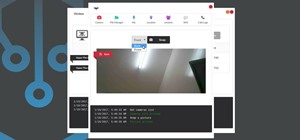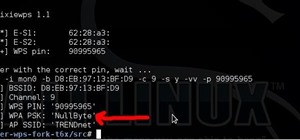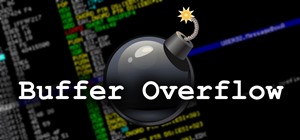Some people are what is labeled a power user. I am one of these people. No matter how fast I get my system, or how quick of programs I have, it is never good enough. There is always at least one program that I could swap out for a more advanced, text-based counterpart that increases performance just a bit. Luckily, you don't have to use text-based programs without graphical user interfaces to get blazing fast speeds on Linux. There are tons of open source alternatives to the mainstream programs that cost loads of money.
I use these programs soley because I am a resource-hungry fiend. However, even to the normal user, you will see an enormous difference in execution and task speed when comparing these programs to their more graphical oriented counterparts.
This Null Byte is a bit of a change of pace. I'm going to introduce you to many open source, lightweight applications, and the categories that they belong to (i.e. text editors, browsers, etc). These are all of the best lightweight programs available to us, in my opinion (for what it's worth). This should answer all of your questions when it comes to necessary programs. These are the best of the best.
Categories with only one item means the program is that good. All of these programs are done by package name, so they can be installed by calling them what they are named here.
Display/Login Managers
These control the desktop environment or window manager selection and log in.
1. xinit
2. slim
Tiling Window Managers
Tiling window managers are extremely light graphical interfaces that can tile your windows in an easy-to-access fashion.
1. awesome
2. i3
Floating Window Managers
Floating managers are about the same as tiling. Except they do not tile. Also very light and quick to respond.
1. openbox
Desktop Environments
Desktop environments are full fledged graphical environments. When you hear DE, think of a Windows-like interface.
1. lxde
2. kde4
3. e17
Shells
Shell interpreters. This is what is used to execute our terminal commands. The default Linux shell is bash.
1. zsh
2. bash
Archive Managers
These are to extract or archive files (.zip, .rar. etc.).
1. 7z
2. tar/xarchiver
File Managers
File managers are what you use to navigate directories with a graphical interface and manage files. Point, click and drag to manage files on your system.
1. qtfm
2. thunar
3. dolphin
Photo Editors
GIMP is an advanced photo editor that some revere as even better than Adobe Photoshop.
1. gimp
Image Viewers
Image viewers are the small, non-editing programs used to look at picture files. This is what you would see after you double-click a picture file.
1. feh
2. gpicview
3. mirage
Instant Messengers
Instant messenger clients are for instant messaging protocols. Pidgin supports nearly every protocol in existence and has plugin support (as well as great plugins already).
1.pidgin
IRC Clients
IRC clients are used to connect to IRC servers and channels.
1. irssi
2. quassel
3. xchat
Network Managers
Network manager are what is used to connect to your internet connection.
1. netcfg
Word Processing
A word processor is just an advanced text editor with formatiing options. Think MS Word.
1. abiword
2. libreoffice
3. gnumeric
Package Managers
A package manager manages what software is installed on your system.
1. yaourt
PDF Readers
Zathura is a lightweight, terminal-like PDF viewer. Incredibly small and fast. It also saves bookmarks.
1. zathura
RSS Readers
RSS readers are used to feed you the latest updates from all of your RSS subscriptions.
1. newsbeuter
Audio Players
Audio players are used to play music files.
1. audacious
System Panels
Tint2 is a fast system panel with a task tray that works across all platforms. It is highly customizable and fast.
1. tint2
Terminal Emulators
Terminal emulators are used to access the command shell from within a GUI.
1. rxvt-unicode
2. terminator
Text Editors
Text editor are simple programs used to modify unformatted text. Usually used for notes, or for programming.
1. nano
2. vim/vi
3. emacs
Torrent Clients
Torrent clients are used to download bit torrent files.
1. rtorrent
2. transmission
Media Players
These play every kind of video format you could imagine. Streaming, TV, and lots of other option are available. These are better than any media player for other platforms in my opinion.
1. mplayer
2. smplayer
3. vlc
Web Browsers
Web browsers are used to access the world wide web. Luakit is a micro browser framework that is barebones. Everything about the browser has to be customized.
1. luakit
2. firefox
3. chromium
The absolute best of the resource friendly programs for Linux!
If you have any other kinds of programs that you would like to see, let me know and I can append them here. Visit the Null Byte IRC. Follow me on Twitter or G+ for updates.
Just updated your iPhone? You'll find new emoji, enhanced security, podcast transcripts, Apple Cash virtual numbers, and other useful features. There are even new additions hidden within Safari. Find out what's new and changed on your iPhone with the iOS 17.4 update.
























6 Comments
Very useful!
thanks man, Ive got Arch running using compiz as a stand alone wm . Need to install some apps so this list will come in handy.
Awesome :). Everyone's going to have a clone of my rig ^_^ haha.
And that Alex is why I am still using Sabayon 7 KDE
Wewt :3/ Sabayon is legit. I think I might toss Gentoo on my new rig this Friday along with Arch, just to play around with it.
I really like it WAY better than the ubuntu based distros and other distros
Share Your Thoughts